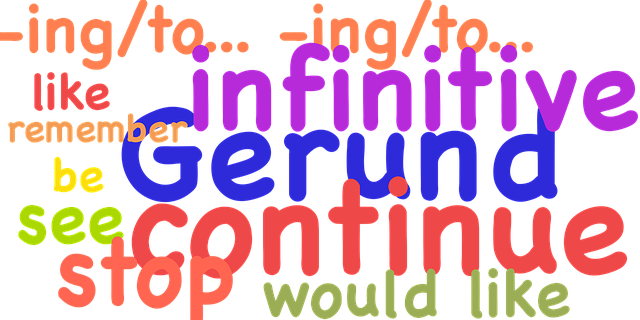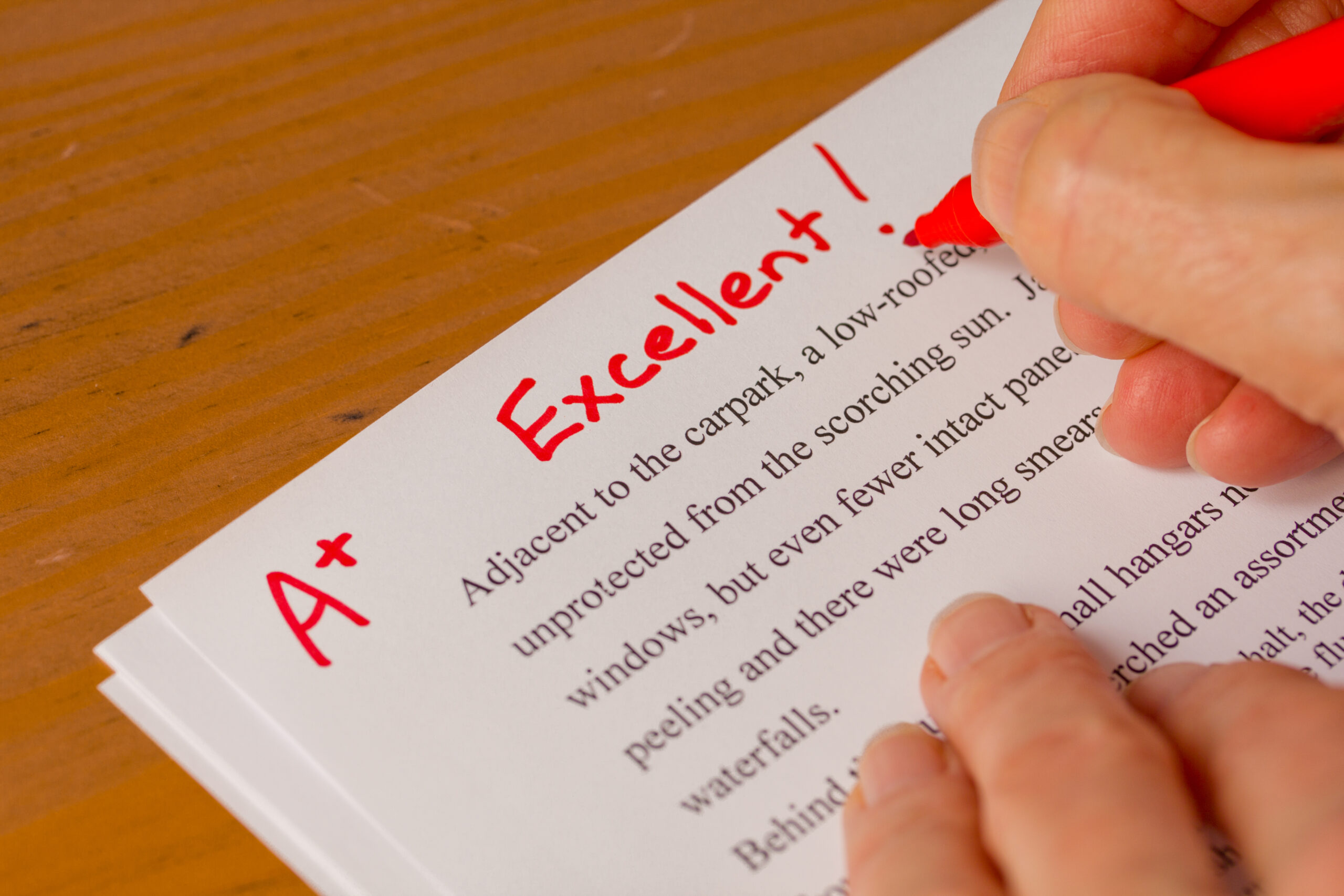

Scoring Creativity: Decoding the Rubric for Creative Writing
My name is Debbie, and I am passionate about developing a love for the written word and planting a seed that will grow into a powerful voice that can inspire many.

Picture this: a blank page, waiting eagerly for you to fill it with words, with ideas, with a world of your very own creation. Whether you’re a seasoned wordsmith or just beginning to dip your toes into the vast ocean of creative writing, there’s no denying the thrill and challenge that comes with transforming a nebulous concept into a tangible piece of art. But how do we measure this artistry? How can we capture the essence of creativity and quantify it in a way that not only recognizes talent but also provides valuable feedback for improvement? Enter the rubric for creative writing – a powerful tool that unlocks the secrets to scoring creativity. In this article, we will embark on a journey to decode this mysterious rubric, demystifying its components and shedding light on how it can elevate your writing to new heights. So, grab your favorite pen and get ready to uncover the hidden treasures within the intricate world of scoring creativity.
Key Elements of a Rubric for Creative Writing
Understanding the purpose and structure of the rubric, evaluating creativity and originality, exploring language use and style, assessing organization and structure, analyzing grammar and mechanics in creative writing, providing constructive feedback to foster growth and improvement, frequently asked questions, to conclude.
When assessing creative writing assignments, it is important to have a rubric that emphasizes the unique aspects of this genre. A well-structured rubric not only helps evaluate students’ work objectively but also provides clear guidelines for improvement. Here are the key elements to consider when creating an effective rubric for creative writing:
- Originality: Successful creative writing demonstrates a unique and imaginative approach. A rubric should prioritize originality, encouraging students to think outside the box and avoid clichés or common themes.
- Engagement: A captivating story or piece of creative writing should engage the reader from beginning to end. Assessing how well a piece holds the reader’s interest, creates emotional connections, or sparks curiosity is crucial in evaluating a student’s work.
- Structure and Organization: Despite its imaginative nature, creative writing should still exhibit a well-structured and organized composition. A rubric should consider the coherence of ideas, logical progression, and the use of literary devices to enhance the overall structure.
Moreover, a rubric for creative writing should not only focus on the final product but also evaluate the writing process. By considering these key elements, educators can provide meaningful feedback and empower students to develop their creativity and refine their writing skills. Remember that a well-crafted rubric not only provides a clear assessment framework but also encourages students to unleash their creativity and storytelling abilities, fostering growth and improvement.
The rubric is a valuable tool that helps teachers assess student work based on specific criteria. It provides a clear outline of expectations, allowing both teachers and students to understand the purpose and structure of the assessment. By breaking down the assignment into different categories and levels of achievement, the rubric ensures fairness and consistency in evaluating student performance.
The structure of a rubric typically includes criteria, descriptors, and levels of achievement. The criteria outline the specific skills, knowledge, or qualities that students are expected to demonstrate in their work. Descriptors provide detailed explanations or examples of what each level represents, helping students understand what is required to achieve a certain grade. These levels of achievement can be presented in different ways, such as a numerical scale, a letter grade, or even descriptive phrases.
- A rubric allows teachers to provide constructive feedback in a clear and organized manner. Students can easily identify areas where they excel and areas that need improvement, enabling them to focus on specific skills and make progress.
- By , students can effectively plan and organize their work. They can align their efforts with the criteria outlined in the rubric, ensuring that they address all the required components and meet the expectations set by the teacher.
- Rubrics promote transparency in assessment as the criteria and expectations are clearly communicated to both teachers and students. This transparency fosters trust and facilitates meaningful discussions about student performance and progress.
Overall, the rubric serves as a valuable tool for guiding and evaluating student work. Understanding its purpose and structure enhances communication, supports effective teaching, and empowers students to take ownership of their learning.

When it comes to , it’s essential to approach the process with an open mind and a willingness to explore new perspectives. In today’s fast-paced world , where innovation is key, acknowledging and celebrating these qualities can lead to breakthrough ideas and solutions in various fields. So, how can we effectively assess creativity and originality? Let’s dive in:
- Embrace diverse thinking: Creativity is not limited to a specific domain or a particular way of thinking. Encouraging diverse perspectives and welcoming ideas from various backgrounds fosters a rich and fertile ground for innovative thinking. By giving space for unconventional thoughts and perspectives, we can unearth hidden gems of creativity.
- Value experimentation: Creativity often thrives through experimentation. Encouraging individuals to try new approaches, take calculated risks, and test unconventional ideas can yield unexpected and groundbreaking results. Acknowledging the value of experimentation creates an environment that supports and nurtures creativity and originality.
- Promote a learning mindset: Creativity flourishes when individuals have a growth mindset and embrace continuous learning. Providing opportunities for personal and professional development, promoting curiosity, and supporting ongoing education empowers individuals to expand their horizons and think creatively in their respective fields.
Creativity and originality are invaluable assets in our ever-evolving world. By adopting an inclusive and open-minded approach, embracing experimentation, and promoting a culture of ongoing learning, we can create an environment that nurtures and celebrates innovative thinking. Let’s remember, true creativity knows no boundaries!

Language use and style are essential aspects of effective communication. They play a vital role in conveying meaning, eliciting emotions, and engaging the audience. By exploring different language use and styles, we can enhance our writing, speaking, and overall communication skills.
One fascinating aspect of language use is the choice of words and phrases. The words we select can shape the tone and mood of our message. For instance, using vibrant and descriptive language can paint a vivid picture in the reader’s mind, while using technical jargon may be more suitable for specialized audiences. It’s important to consider the impact of our word choices to ensure clarity and precision.
- Metaphors and Similes: These literary devices can add depth and creativity to our language use. They help us explain complex concepts by drawing comparisons to more familiar objects or actions.
- Analogies: Analogies are useful for making abstract ideas more tangible and relatable. By likening a new concept to something familiar, we help our audience better grasp the subject matter.
- Rhetorical Devices: Rhetorical devices, such as alliteration, repetition, and parallelism, add rhythm and emphasis to our writing. They can make our message more memorable and persuasive.
Additionally, understanding different writing and speaking styles allows us to adapt our communication to different contexts and audiences. From formal and academic writing to casual and conversational tones, each style serves its purpose. Adapting our style based on the audience’s expectations can build rapport and improve their overall experience with our message.
By continually , we can cultivate our communication skills and become more effective storytellers. Experimenting with different techniques and styles helps us discover our unique voice and develop a versatile approach to communication.

When evaluating an organization’s effectiveness, one key aspect to consider is its organization and structure. A well-organized and efficiently structured organization can greatly contribute to its overall success and productivity. Here are some factors to assess when evaluating an organization’s organization and structure:
- Clarity of Roles: It is crucial for all team members to have a clear understanding of their roles and responsibilities within the organization. This ensures that tasks are properly allocated and promotes accountability.
- Communication Channels: A strong organization fosters effective communication channels, both vertically and horizontally. Transparent and open lines of communication facilitate the flow of information, enhance collaboration, and minimize misunderstandings.
- Efficiency of Workflow: A well-structured organization streamlines workflow processes, reducing unnecessary delays and optimizing efficiency. Assessing how tasks are assigned and how information flows within the organization can help identify areas for improvement.
Furthermore, a clear hierarchy within an organization ensures that individuals and teams know whom to report to and seek guidance from. Roles such as managers, supervisors, and team leaders establish an accountability structure that promotes effective decision-making and problem-solving. Additionally, an organization’s structure should allow for flexibility and adaptability to meet changing business needs and respond to unforeseen challenges.

Understanding and perfecting grammar and mechanics in creative writing can greatly enhance the overall quality of your work. While creative writing is often seen as free-flowing and expressive, paying attention to the technical aspects can make a huge difference in how your message is conveyed.
To start analyzing grammar and mechanics in your creative writing, consider the following tips:
- Grammar Mastery: Develop a strong foundation in grammar rules, including verb tense, subject-verb agreement , and punctuation. This ensures that your writing flows smoothly and is easily understood by your readers.
- Consistent Voice: Maintain a consistent narrative voice throughout your piece. Whether it’s first-person, third-person limited, or omniscient, clarity in voicing will prevent confusion and keep your readers engaged.
Furthermore, it’s important to recognize the power of effective mechanics in creative writing. Here are some key aspects to consider:
- Punctuation and Sentence Structure: Experiment with different sentence lengths and punctuation marks to create a rhythmic flow in your writing. This can add variety and help maintain the reader’s interest.
- Word Choice: Be conscious of the words you use and their impact on the overall tone and mood of your writing. Employing descriptive and vibrant vocabulary can bring your story to life and captivate your audience.
By paying attention to grammar and mechanics in creative writing, you can effectively convey your message while showcasing your artistry and maintaining the reader’s attention. Embrace these techniques and watch your writing soar to new heights!
Constructive feedback plays a critical role in helping individuals and teams reach their full potential. However, giving feedback in a manner that encourages growth and improvement can be challenging. By following a few key principles, you can provide feedback that is both effective and supportive.
- Focus on specific behaviors: When offering feedback, it is important to pinpoint the specific behaviors or actions that need improvement. By being specific, you can help the recipient understand exactly what they can do differently.
- Use the sandwich technique: One way to make feedback more constructive is to employ the sandwich technique. Begin with positive reinforcement, then offer areas for improvement, and finally end on a positive note. This approach helps maintain a healthy balance and ensures that the feedback is not overly critical.
- Be objective and avoid personal attacks: Feedback should always be objective and focused on the task or behavior at hand. Avoid making it personal or attacking the individual’s character. By staying objective, you can keep the conversation focused on growth and improvement.
Moreover, when providing feedback, it is essential to be empathetic and understanding. Put yourself in the recipient’s shoes and try to see things from their perspective. This will help you deliver feedback with empathy, making it easier for the recipient to accept and act upon.
Q: What is creative writing?
A: Creative writing is a form of artistic expression that involves crafting original stories, poems, plays, and other literary works. It allows writers to explore their imagination and unique perspectives through compelling narratives or evocative language.
Q: Why is creative writing important and worth assessing?
A: Creative writing enhances critical thinking, communication skills, and imagination. Assessing creative writing helps recognize and develop the writer’s ability to effectively express ideas, emotions, and experiences. It also promotes individuality, literary analysis, and cultural exchange.
Q: What is a rubric for creative writing?
A: A rubric for creative writing is a scoring tool used to assess and evaluate written works based on specific criteria. It outlines the expectations and benchmarks for various aspects of the writing, such as plot development, characterization, language use, and overall impact. A rubric provides a standardized and transparent evaluation process.
Q: What are the main components of a rubric for creative writing?
A: The components may vary depending on the purpose and level of assessment, but common elements include plot and structure, character development, language and style, creativity, originality, and overall impact. Each component is further divided into specific criteria and assigned different levels of proficiency, usually represented by descriptive statements and corresponding scores.
Q: How does a rubric help both teachers and students in evaluating creative writing?
A: Rubrics provide clear expectations and guidelines for both teachers and students. For teachers, it offers a systematic and consistent method of evaluation, reducing potential bias. Students benefit from the rubric by understanding the grading criteria in advance, which enables them to focus on specific areas of improvement and self-assessment. It promotes a fair and transparent assessment process.
Q: How can a rubric be used to provide constructive feedback?
A: A rubric allows teachers to provide specific feedback based on established criteria, highlighting both strengths and areas for improvement. By referring to the rubric, teachers can offer targeted suggestions to enhance plot development, character portrayal, language use, or creativity in the student’s writing. This feedback helps students understand their progress and areas where they need more practice, leading to growth as writers.
Q: Can a rubric be adjusted or personalized for specific writing assignments or student needs?
A: Yes, rubrics can be modified based on the specific assignment requirements, classroom objectives, or individual student needs. Teachers may adapt the rubric to address unique elements or emphasize particular writing skills relevant to the assignment or curriculum. Personalization enables a more tailored, meaningful assessment and supports the diverse needs and strengths of students.
Q: How can students use rubrics to improve their creative writing skills?
A: Students can refer to the rubric before, during, and after writing to ensure their work meets specific criteria and expectations. By analyzing the rubric, they can identify areas that need improvement and focus their efforts accordingly. Frequent self-assessment using the rubric can ultimately help students achieve a higher level of proficiency in creative writing and guide their growth as competent writers.
Q: Are rubrics the only way to evaluate creative writing?
A: While rubrics provide a structured and objective evaluation method, they are not the only way to assess creative writing. Other assessment tools, such as teacher feedback, conferences, peer reviews, and portfolio assessments, can also complement rubrics and provide a more holistic evaluation of a student’s writing skills. It is crucial to employ multiple evaluation methods to obtain a comprehensive view of a writer’s abilities.
In conclusion, understanding the rubric for creative writing can help writers enhance their skills and meet the criteria for scoring creativity.
Escaping the Rut: How to Get Away From Writer’s Block
Mastering Creativity: Writers Block: How to Overcome
Leave a Comment Cancel reply
Save my name, email, and website in this browser for the next time I comment.
Reach out to us for sponsorship opportunities.
Welcome to Creative Writing Prompts
At Creative Writing Prompts, we believe in the power of words to shape worlds. Our platform is a sanctuary for aspiring writers, seasoned wordsmiths, and everyone. Here, storytelling finds its home, and your creative journey begins its captivating voyage.
© 2024 Creativewriting-prompts.com
Author of Monsters in Appalachia
Grading Creative Writing: What’s an A?
This post may contain affiliate links. Affiliate links are a way for content creators to earn commissions on purchases made through links. It doesn’t cost buyers anything when they use affiliate links. It only helps me earn a small commission. You can be sure that I will only ever recommend products that I have tried myself. Learn more in my privacy policy .

For the past several days, I’ve been working through a stack of critical analysis essays and printed slides of accompanying oral presentations as well as revisions of short stories and personal essays. Every semester I struggle to come up with rubrics that will help guide students toward successfully completing assignments in my creative writing courses. It’s not so hard to grade the critical analysis essay. I provide clear guidelines outlining how many pages the paper should be, how many sources the writer should cite, how the paper should be formatted. I provide a list of topics and then offer a fairly extensive list of examples of ways a student might tackle each of the topics. For instance:
In response to prompt #1:
a. Choose one short piece of work (fiction or CNF) and pore over it for clues to how the author employs one specific aspect of craft. You may choose to study how character is used in the piece. Or perhaps setting, POV, plot, voice, or theme. You may examine the way conflict is used; how does it move from desire to conflict to climax to change? Isolate moments of internal and external conflict. How does the author build suspense? Perhaps you’d rather examine a piece for meaning. What is the author saying about the human condition? And just as importantly, why is he/she saying it? More important even yet, how does he/she incrementally and skillfully weave these thematic threads throughout the piece?
The same is true for the accompanying oral presentation. Guidelines clearly stipulate that students should speak for 10-15 minutes without reading from their essays. The presentation should include at least one visual component, either a PowerPoint presentation, notes written on the dry erase board, or handouts.
Grading work like this isn’t too difficult. I’ve done most of the heavy lifting for myself when it’s time to grade, but I’ve also made the student’s job easier. There’s no ambiguity. The rubrics I use are cobbled together from similar ones I’ve found online or gotten from other instructors. Four points are awarded for content if: “inferences, analysis, and interpretation of the selected works are sophisticated rather than simply competent ,” for example. There is some measure of subjectivity (what’s competent or sophisticated?) but a tally sheet of this kind satisfies many educators, and since I’m not an expert in learning theory, I’ll take their word for it.
Much more difficult is assessing a piece of fiction or a personal essay. I stress the importance of revision. All semester, I remind students that nothing they write for class will be anywhere close to finished. They should not get the impression that an A or B means a story or essay is perfect. I tell them their endings, in particular, are probably not going to work, that it’s going to take a long time to get their endings. For some, it may be their beginnings that won’t work. Or something else will be utterly impossible. Many things will be missing. Too many irrelevant things will be included. Characters won’t be sufficiently developed. There will be plot holes. Some students will not even write stories; they’ll write vignettes. All of these problems will be pointed out in my written comments, and this is essentially what I consider a student’s grade, this feedback, even though I’m perfectly aware of the fact that nothing matters much to students, not even creative writing students, except the almighty letter grade. And it isn’t their fault. Getting into graduate school, the programs of their choice, hinges on those grades.
If the writing is not confusing — and believe me, most students make the mistake of thinking that confusing prose is more sophisticated than clear prose — if it’s clear and engaging and shows adequate skill in using images and fresh language. If there’s evidence the writer understands how to develop a character, to create a setting, to string together a story that’s plausible, and knows how to write a scene that dramatizes the action directly rather than summarizes events using only exposition, I will give the writer an A-, stressing again that this is merely a very rough first draft.
Some of you may do it differently. One writer I know tells the story of a writing instructor who gave out one single A per semester because he felt that in order to be called exceptional, a piece of work must be singular. Nothing else should come anywhere near it. Makes sense if logic is what matters most to you as an instructor, I suppose. But I’m more concerned with the effect it has on a student’s attitude. My end goal as a teacher is to improve each of my students’ writing at least three-fold and at the same time, keep them motivated. Writing is hard enough. We all want to quit sooner rather than later. There will be lots of ways their work will be sorted out and labeled down the road. Some will find success, perhaps. Others won’t. My job, as I see it, is to keep them trying long enough that they might have a chance.
In the Army, I was graded on a Go/No Go system, and that would be my preference for grading creative work as well. Properly administering an antidote for exposure to nuclear or biological chemical agents is pass or fail. Setting up, arming, and remotely discharging a claymore mine is either done correctly or it’s not. So it goes with writing stories. The degree to which our mistakes are evaluated does not change the fact that we’re missing a leg. Grades tell their own stories and are often based more in fiction than reality. You’re an exceptional student. You’re a solid, hardworking, good student. You are an average student. You’re trailing behind your peers. You’ll never make it, not ever . These are lazy and vague generalizations. I’d rather be told I’m missing a leg. You blew it off on page 4. This is information I need, even if I can’t fix the problem. At least I’ll know where I stand, what my weaknesses are and maybe I can figure out ways to compensate for missing that leg. If I truly graded short stories on this outmoded academic scale, they’d all be Cs or Ds. And what would that tell students? Worse still, how would that kind of grade discourage them from taking other creative writing courses?
Maybe I give out a few easy As, become known as being soft, let a few slackers through just fulfilling a humanities requirement. Not the reputation I’d prefer. But what if I let a D writer move through, a real hack but one with guts, one with fire in her belly? A lot of people don’t know it, but this is the genius thinking used by the military. Level the playing field. Everyone’s a maggot, but everyone has equal opportunity. You see the weak get stronger for a reason.
Why do I think this way? Because I’ve seen lots of writers with that thing we call talent give up the minute they feel push-back while their far-less “gifted” peers plug away and figure out what they’re doing. Those who don’t quit have a chance. Talent is a beautiful thing to come across as a teacher. It’s exciting. But it scares me a little, makes me worry and do what I can to protect a student from expecting too much too soon. It’s a matter of 10,000 hours, I try to make them all understand. Put your time in. Measure yourself only against yourself until you get those hours behind you. And whatever you do, don’t quit.
So, I give A minuses to first drafts unless one is obviously lacking or shows signs of having been slapped together at the last minute, and then I grade accordingly. Revisions are treated differently. Here’s where students can really begin to learn what it means to be a writer. No easy A- here. I’m careful to point out that revision is not correcting typos but completely re-imagining their work. When I was an undergraduate, we were asked to turn in a portfolio of our best pieces of writing. Which meant that I fixed a few typos and turned in the work that had already been awarded As and called it done. Portfolios discourage revision. I’ve stopped requiring them and opted instead to make students choose their weakest piece of writing and study it. What’s wrong with it? Why isn’t it working? What did your peers say was off about this piece? What did I suggest needed improvement? What do YOU know better than anyone else about why it maybe isn’t working? I tell them they’ll be rewarded for making more changes, big sweeping changes, rather than fewer. I remind them to save their original drafts and then to really go for it because there’s nothing to lose. Any changes they make for their graded revisions can later be abandoned. There’s no commitment required. Only an open mind to what else could happen. If the writer is daring in her revision, she too will get an A-. If she is convinced the piece is perfect, that’s not so good.
Share this:
Related posts.

This post may contain affiliate links. Affiliate links are a way for content creators to earn commissions on purchases made through links. It doesn’t cost…

Leave a Comment
You must be logged in to post a comment.
Writer's Bounty
Providing Support for Writers and Teachers of Writing

Cheat Sheet for Grading Creative Writing
A cheat sheet for grading creative writing can be a useful tool for teachers and instructors who are looking for a quick and easy way to assess the quality of their students’ writing. By providing a set of guidelines and criteria to follow, a cheat sheet can help instructors quickly and consistently evaluate the creativity, organization, and overall effectiveness of a piece of writing. This then allows them to provide constructive feedback and support to their students as they work to improve their skills.
Why is Grading Creative Writing so Difficult?
Grading creative writing can be challenging for instructors. It’s often very personal and subjective, which makes it hard to assess using traditional grading systems. Plus, creative writing can be complex. It can involve a lot of emotions, which can be difficult to capture in writing. Additionally, the field is constantly changing, making it hard for instructors to stay on top of new styles and techniques. Overall, grading creative writing requires a careful and sensitive approach.
Cheat Sheet for Grading
Here are six quick and easy tips to keep in mind when grading your students’ creative writing.

Tip 1: Focus on the Overall Structure and Organization
- Does it have a clear beginning, middle, and end?
- Does the plot flow smoothly from one event to the next?
- Does it pull you along, or do you lose track of what’s happening?
Tip 2: Pay Attention to the Characters.
- Are they well-developed and believable?
- Do they have distinct personalities and motivations?
- Does the protagonist have any flaws or are they perfect?
- Does the antagonist have any redeeming qualities?

Tip 3: Look for Strong Descriptions and Sensory Details.
- Does the writer use vivid language to bring the scene to life?
- Does the writer use more senses in descriptions than just sight?
- Do the setting descriptions help set up a mood for the writing?
Tip 4: Consider the Use of Dialogue.
- Does it sound natural and add to the story?
- Does it give insight into the personality traits of the characters?
- Is it written correctly, following punctuation and paragraphing norms?


Tip 5: Evaluate the Writer’s Style and Voice.
- Does the writing have a unique and engaging tone?
- Could you tell which student wrote the piece just by reading it?
Tip 6: Look for Creativity and Originality
- Does the writer have fresh ideas?
- Is there anything unique about this writing from that of other students?
Final Thoughts and Freebie
Overall, the key is to provide constructive feedback that will help the writer improve and grow. It’s important to remember that creative writing is a form of self-expression, and everyone has their own unique voice and style. As a grader, your job is to help the writer hone their craft and develop their skills.
If you have any advice for grading creative writing, please put it in the comments below. Also, here is a free checklist to help you have a grade for each student’s creative work. It’s available in both an editable PowerPoint and a quick print PDF.
Similar Posts

The Magic of Teaching Creative Writing Online: Build a Stellar Virtual Classroom
Hey there, future digital educators! Are you ready to dive into the exciting world of online creative writing? Perfect, because we’re about to reveal the secret sauce that makes this whole online teaching thing a piece of cake. You’ve probably heard the buzz about how technology is transforming education, right? Well, strap in because teaching…

A Creative Writing Classroom in 5 Easy Steps
Setting up a creative writing classroom can be a fun and rewarding process that can help students to thrive and learn in a dynamic and engaging environment. By following a few simple steps, teachers can create a classroom that encourages creativity, curiosity, and collaboration. Ste 1: Create a Comfortable and Inspiring Space The physical space…

Building Writing Communities: School Edition
Hey there, fellow educators! 📚✏️ As someone who juggles the worlds of authoring and teaching (yeah, that heady blend of writing and computer science in the classroom), I’ve seen firsthand the power of a strong writing community. Remember those late-night writing sessions, fueled by coffee and creativity? Let’s recreate that magic for our students. Dive…

5 Quick and Easy Ways to Motivate Student Writers
As a teacher, one of your most important jobs is to help motivate your students to write. Writing can be a difficult task for many students, but with the right tips and techniques, you can help them overcome their reluctance to put pen to paper (or fingers to keyboard). In this blog post, we will…

The Write Game: Level Up Student Creativity with Fun and Play
Hey there, fellow word nerds and educators! Welcome to “The Write Game,” where I’m about leveling student creativity through fun and play. If you’ve ever felt like your students were stuck in a creative rut or struggled to engage them in the writing process, you’ve come to the right place. I’m here to help you…

Teaching Creative Writing: Top 10 Reasons It is Essential
Teaching creative writing is important! As a teacher, there are many times when students or parents asked me “Why are we doing this?” It makes my heart sink because it feels like they didn’t believe in their abilities. The problem gets worse when the person asking has potential as a writer. They don’t understand what…
Journal of Creative Writing Studies
Home > JCWS > Vol. 6 > Iss. 2
Grading What We Value: A Conversation for Creative Writing
Erika Luckert , University of Nebraska - Lincoln Follow Jason McCormick , University of Nebraska-Lincoln Follow
This essay considers how we might grade creative writing in a way that is better aligned with our values as writers and teachers. The authors, in the form of an active dialogue, reflect on their efforts to develop an alternative grading method, and discuss their experiences putting that method into practice at two different City University of New York (CUNY) colleges. They detail the considerations that informed their “rubric” and its four central values: professionalism, community, exploration, and revision. They also discuss their strategies for putting those values into practice, through collective brainstorming with students, and the development of individualized contracts. Finally, the authors reflect on the successes, challenges, and surprising outcomes of their grading approach, as well as some important pedagogical interventions that were enabled through this “rubric.” In addition to these reflections, this essay also includes samples of the assessment materials they developed for these classes. By sharing these materials and stories, the authors aim to open their conversations about grading creative writing to a wider community of creative writing studies scholars.
Recommended Citation
Luckert, Erika and McCormick, Jason (2021) "Grading What We Value: A Conversation for Creative Writing," Journal of Creative Writing Studies : Vol. 6: Iss. 2, Article 3. Available at: https://repository.rit.edu/jcws/vol6/iss2/3
Since October 05, 2021
Included in
Creative Writing Commons
- Journal Home
- About This Journal
- Submission Guidelines
- Submit Article
- Receive Email Notices or RSS
Advanced Search
ISSN: 2474-2937
Home | About | FAQ | My Account | Accessibility Statement
Privacy Copyright

IMAGES
VIDEO
COMMENTS
Grading What We Value: A Conversation for Creative Writing. The conversation began in a bar. Or on a train heading to a bar, depending on who you ask. The conversation took place between two writers, two teachers. One of them was a poet teaching at a four-year liberal arts school. The other taught at a community college and wrote fiction.
A: A rubric for creative writing is a scoring tool used to assess and evaluate written works based on specific criteria. It outlines the expectations and benchmarks for various aspects of the writing, such as plot development, characterization, language use, and overall impact.
In creative writing classes, though, it becomes especially difficult to reconcile course goals with student talent and effort. By using rubrics, assessing student revisions, incorporating self-evaluation and implementing portfolio evaluation, you ...
So it goes with writing stories. The degree to which our mistakes are evaluated does not change the fact that we’re missing a leg. Grades tell their own stories and are often based more in fiction than reality. You’re an exceptional student. You’re a solid, hardworking, good student. You are an average student.
Why is Grading Creative Writing so Difficult? Cheat Sheet for Grading. Tip 1: Focus on the Overall Structure and Organization. Tip 2: Pay Attention to the Characters. Tip 3: Look for Strong Descriptions and Sensory Details. Tip 4: Consider the Use of Dialogue. Tip 5: Evaluate the Writer's Style and Voice.
Luckert, Erika and McCormick, Jason (2021) "Grading What We Value: A Conversation for Creative Writing," Journal of Creative Writing Studies: Vol. 6: Iss. 2, Article 3. This essay considers how we might grade creative writing in a way that is better aligned with our values as writers and teachers. The authors, in the form of an active dialogue ...
However, Sindu is cognizant that shifting the creative writing grading model could lead students to bring less effort into the classroom. “My friend taught creative writing at a university that had no grades at all,” Sindu explained. “In a class of 20 students, maybe 5 would show up on any one day… students often didn’t do the reading.
The question of grading creative work is one that troubles creative writing professors and their students, as well as other English Literature faculty who may have to evaluate student creative work (e.g., in senior theses). Professors and students often confuse the merit of the authors’ intentions with that of the finished product.
Evans and Hanna both teach creative writing classes at Rowan and have published many literary works of their own. Evans comes from a background of short fiction and music, whereas Hanna’s career has primarily been focused on prose and poetry. Combined, they have over 40 years of teaching experience under their belts, and a lot of interesting ...
Past approaches have dissected human creative writing using grading rubrics (Rodríguez 2008), and similar criteria have been applied to machine writing (Chakrabarty et al. 2023). Incorporating ...